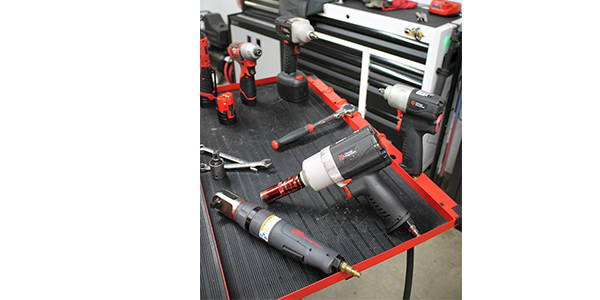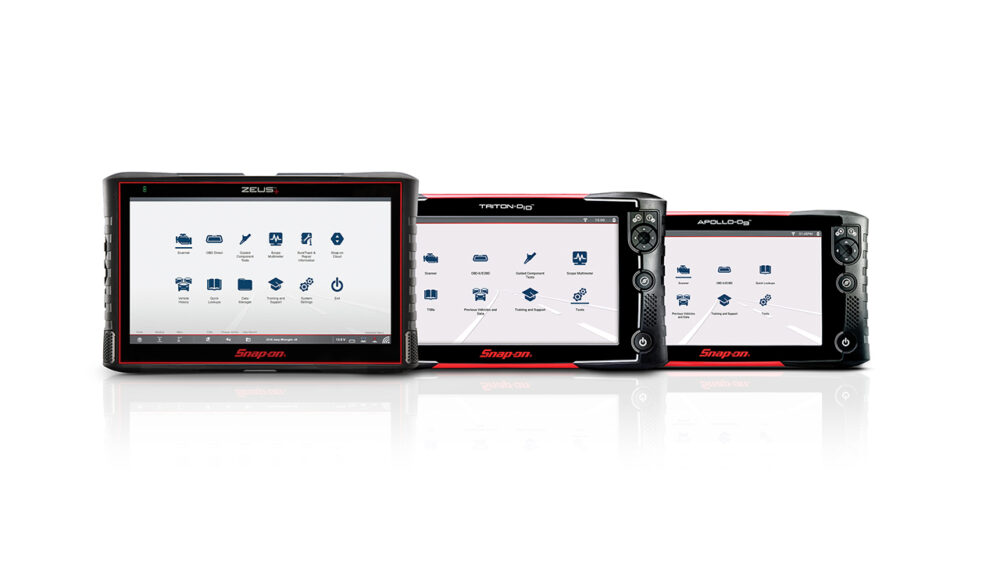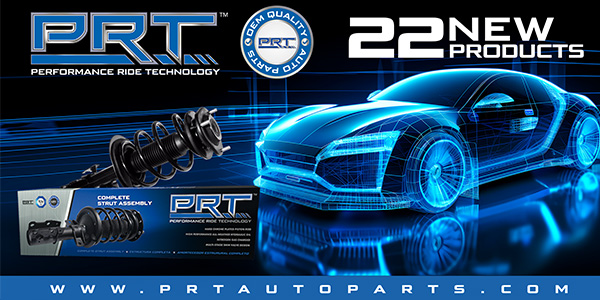
There’s not a single shop where you won’t hear the familiar sound of an air tool. Even Hollywood loves to pipe in the sound of an impact in every single auto shop scene. Of course, the “Hollywood mechanic” may be bragging about the big-block engine when the car clearly has a small-block under the hood, but at least we got the sound of the impact!
Air tools may not be the first things that come to mind when you think of innovation, but don’t be fooled. Just like the cordless electric tool, smaller, lighter and more powerful is the goal that drives innovation, and modern air tools are always riding on the cutting edge.
Traditionally made of metal, composite materials are used in the construction of lighter and smaller housings and lightweight metals such as titanium and aircraft-grade aluminum have cut even more from the scale.
Composite materials also have an added benefit of insulating against extreme temperature changes, keeping the tool body comfortable instead of cold.
Normally you would think that lightweight means fragile, but it’s the opposite in this case. In addition to being lighter, modern materials are stronger, too, and rigorous testing is part of the engineering process. These tools get dropped, beat up and abused in every possible way to make sure that they will hold up in the field.
Motor design is constantly on the list of improvements. Stronger, lighter materials and the computer-controlled technology of machining have resulted in high quality, longer lasting motors.
Improved air flow and additional vanes are pushing power and torque output higher than it has ever been. Internal air flow and cooling design gives us thermally balanced motors, increasing longevity and providing consistent performance during heavy use.
Ergonomics is another non-stop innovation. Contoured, cushioned grips provide comfort and reduce vibration. The working position is also factored in as part of tool development and modern air tools are balanced to reduce fatigue and gripping pressure.
Keeping with ergonomics; forward, reverse and speed control buttons are positioned for easy use and many tools have articulated joints to adjust for different jobs.
Exhaust used to be just a “blow-it-out-anywhere” affair, but much more thought goes into it today. The air is directed away from the work area and the technician so a minimal amount of debris is kicked up and nothing is blown back at the user.
Exhaust is also designed to reduce noise and many tools offer variable exhaust outlets in the event that you need to open it up for maximum power.
A unique aspect on the list of innovations is personality. Put another notch on the composite belt, because many companies are offering a wide range of colors for their air tools. You spend a lot of money on your tools; why not get a color you like? This also serves as a way to identify your air tools easily from others’, making sure they stay on your box where they belong.
Variable triggers are one final thing that cannot be overlooked. The days of all or nothing are long gone. When they were originally supposed to be variable, they were very touchy and never really hit the mark, but now they function as they should, providing excellent control.
Even though we’re focusing on innovations, I’d like to veer off course and talk about air tool lubrication. They have always needed it and always will. It can mean the difference between a long lasting tool and a short life.
There are multiple different brands and types of oil available and you may already have a preference, but using any one is better than none.
It is important to point out is that not only is it necessary to lubricate prior to using, but it is equally, if not more critical, to lubricate prior to storage. As you use your air tool, moisture and contaminants are deposited throughout. It’s the oil that cleans these out to prevent damage. After using an air tool, most of the pre-use lubrication has been forced out, leaving moisture and contaminants in the tool.
If the tool sits in your box, even overnight, this moisture will slowly begin to corrode the inner workings. Running a few drops of lubricant through the tool after use allows you to store your tools with a fresh, clean layer of oil on the inside and prevents unwanted corrosion.
You’ll know that your tools will always be ready to work, just in case Hollywood shows up.













